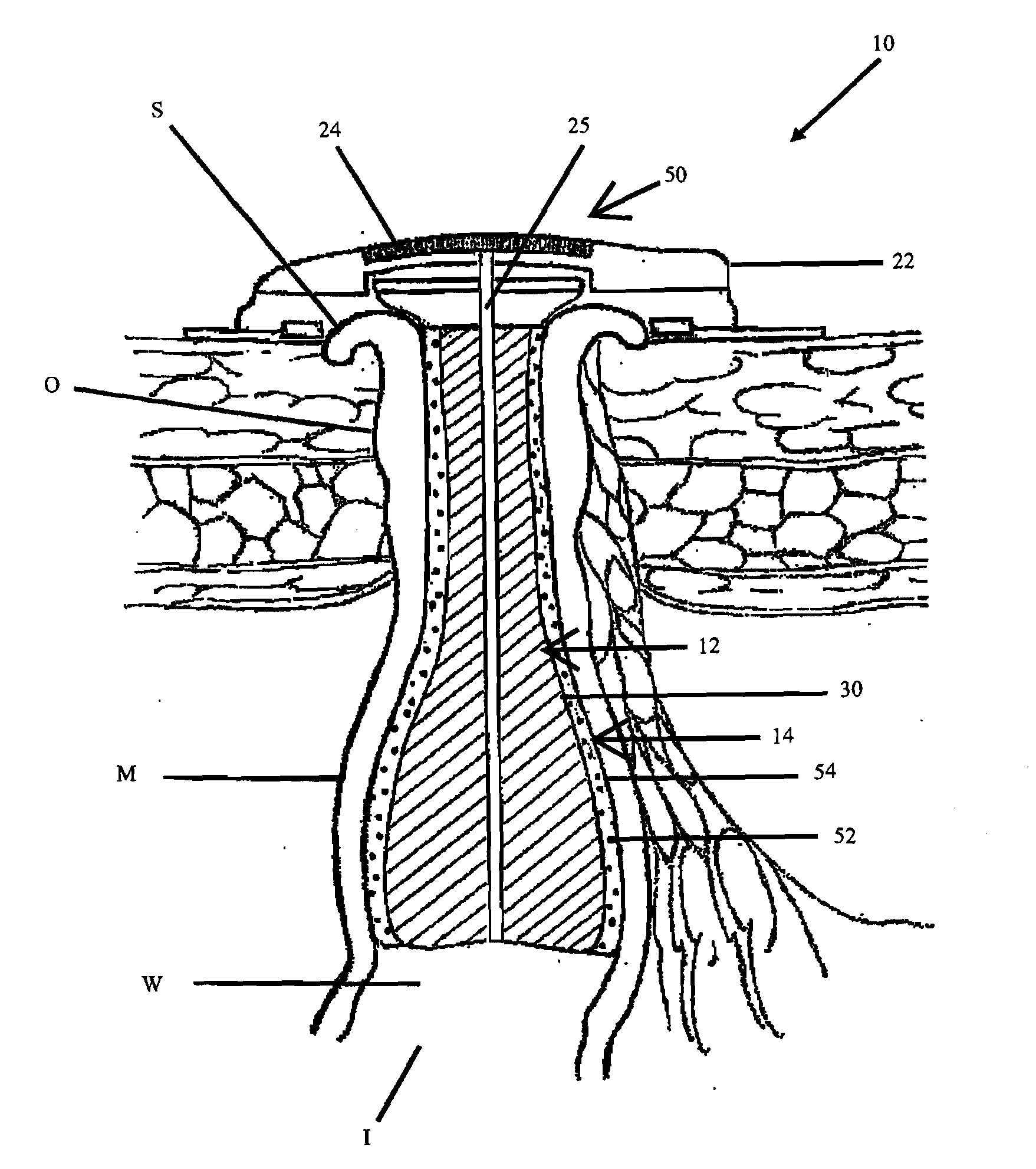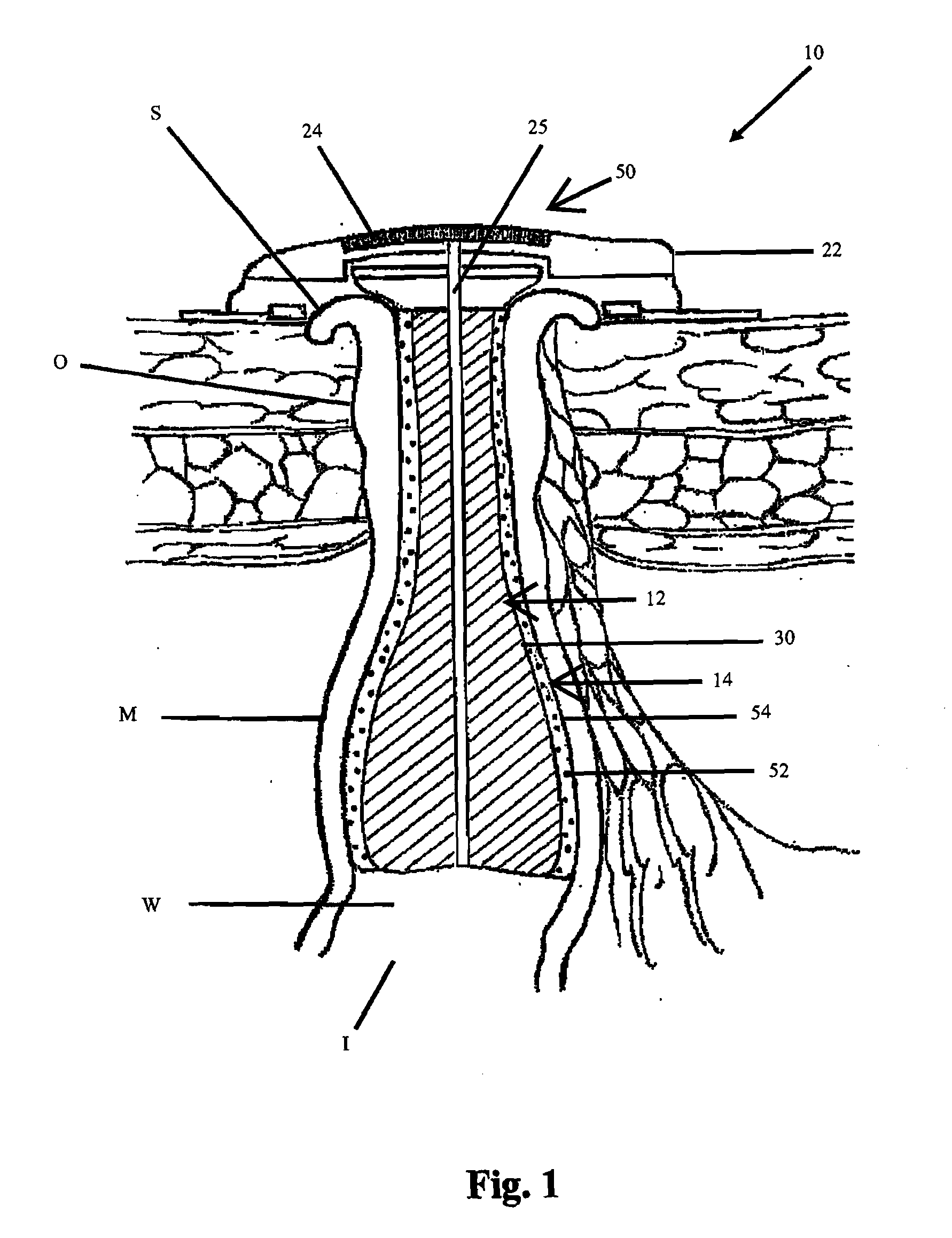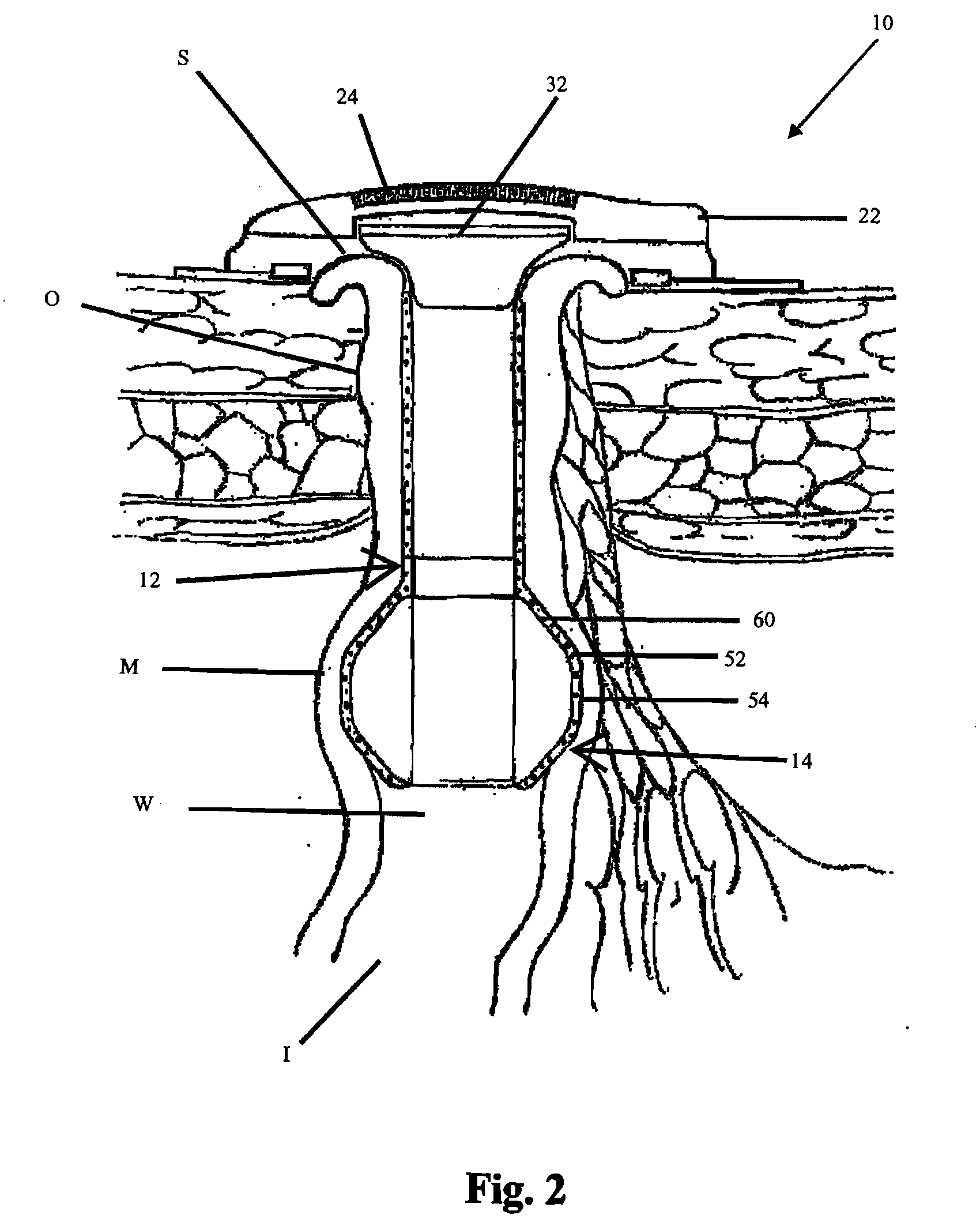Continent ostomy system with chemical neuromuscular control
a technology of chemical neuromuscular control and ostomy, which is applied in the field of continence devices, can solve the problems of inability to maintain firm muscle control of the anal sphincter, inability to provide the storage capacity naturally provided by the rectum and the muscle control provided by the anal sphincter, and individuals experiencing a variety of problems, so as to achieve the effect of arresting the advancement of intestinal contents
- Summary
- Abstract
- Description
- Claims
- Application Information
AI Technical Summary
Benefits of technology
Problems solved by technology
Method used
Image
Examples
Embodiment Construction
[0040]The following description of the preferred embodiment(s) is merely exemplary in nature and is in no way intended to limit the invention, its application, or uses.
[0041]In its basic form, the new apparatus for providing continence to a gastrointestinal ostomy O, generally designated 10, includes a luminal sealing device 12 contactable with the mucosal wall W of the intestine I in a gastrointestinal ostomy O, a chemical neuromuscular control agent 52 having an inhibitory effect on peristalsis or smooth muscle contraction and relaxation cycles, and an administration mechanism 14 for controlled, localized delivery of the neuromuscular control agent 52 to the intestine I.
[0042]All or part of the apparatus 10 can be located inside the patient's body. Alternatively, all or part of the apparatus 10 can be located outside the patient's body. For example, the lumen sealing device 12 may be located inside the patient's body, such as, a plug residing within the intestinal lumen (e.g., FIG...
PUM
 Login to View More
Login to View More Abstract
Description
Claims
Application Information
 Login to View More
Login to View More - R&D
- Intellectual Property
- Life Sciences
- Materials
- Tech Scout
- Unparalleled Data Quality
- Higher Quality Content
- 60% Fewer Hallucinations
Browse by: Latest US Patents, China's latest patents, Technical Efficacy Thesaurus, Application Domain, Technology Topic, Popular Technical Reports.
© 2025 PatSnap. All rights reserved.Legal|Privacy policy|Modern Slavery Act Transparency Statement|Sitemap|About US| Contact US: help@patsnap.com



